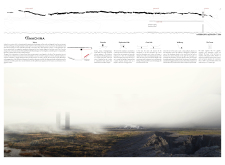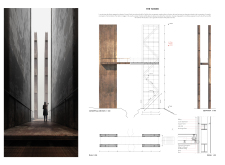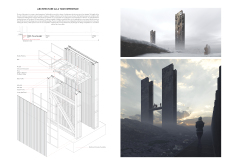5 key facts about this project
At its core, the project serves a specific function, whether residential, commercial, or civic, facilitating community interaction or individual reflection. The spaces are meticulously organized to enable efficient movement and promote social engagement. Open-plan layouts encourage fluidity, while designated areas serve distinct purposes, making the design both versatile and user-friendly. The spatial arrangement is intuitive, allowing natural circulation paths that enhance public engagement or private solace as needed.
A notable aspect of this architectural project is the strategic selection of materials used throughout. The palette may consist of locally sourced stone, sustainably harvested timber, glass, and metal accents, reflecting an environmental consciousness that is increasingly vital in modern architecture. The choice of these materials not only responds to aesthetic desires but also acknowledges the importance of sustainability and the connection to the locale’s natural resources. For example, the use of large glass panels invites natural light into interior spaces, fostering a seamless relationship between indoor and outdoor environments, while timber provides warmth and a sense of durability.
Furthermore, the design incorporates innovative technologies and sustainable practices, such as energy-efficient systems and sustainable landscaping. These elements minimize environmental impact while enhancing the building's resilience and longevity. The integration of natural ventilation and radiant heating systems exemplifies a commitment to eco-friendly design, ensuring that the building remains comfortable throughout the year while reducing its overall carbon footprint.
Unique design approaches are evident in architectural details, such as features that address local climate considerations. The roof design, possibly featuring overhangs or sloped elements, allows for effective rainwater management and passive solar heating. The strategic placement of windows and shading devices helps regulate indoor temperatures and light quality, enhancing the overall environmental performance of the structure.
Landscaping plays a pivotal role in the project, with outdoor spaces designed to foster community interaction and promote biodiversity. Plantings may include native species that require minimal maintenance and provide habitats for local wildlife, strengthening the building's ecological connection to its surroundings.
This architectural project stands out not only due to its construction and design philosophies but also in its response to the cultural and social narratives of the area. By engaging with the surrounding topography and urban fabric, it reflects an understanding of place that informs its architectural language. Moreover, the design is sensitive to historical contexts, paying homage to traditional styles while integrating modern interpretations that speak to contemporary user needs.
Each element of the project contributes to a larger narrative of innovation and contextual relevance, emphasizing the importance of architecture as a facilitator of social connections and environmental stewardship. As viewers explore this project further, they are encouraged to delve into the architectural plans, architectural sections, and architectural designs to appreciate the meticulous thought and intention behind each decision. The project serves as a valuable case study in effective design practices that honor both the environment and the community it serves, inviting a deeper understanding of its architectural ideas and the broader implications they hold for future developments. The exploration of this project promises to reveal further insights and inspiration in the field of architecture.


























